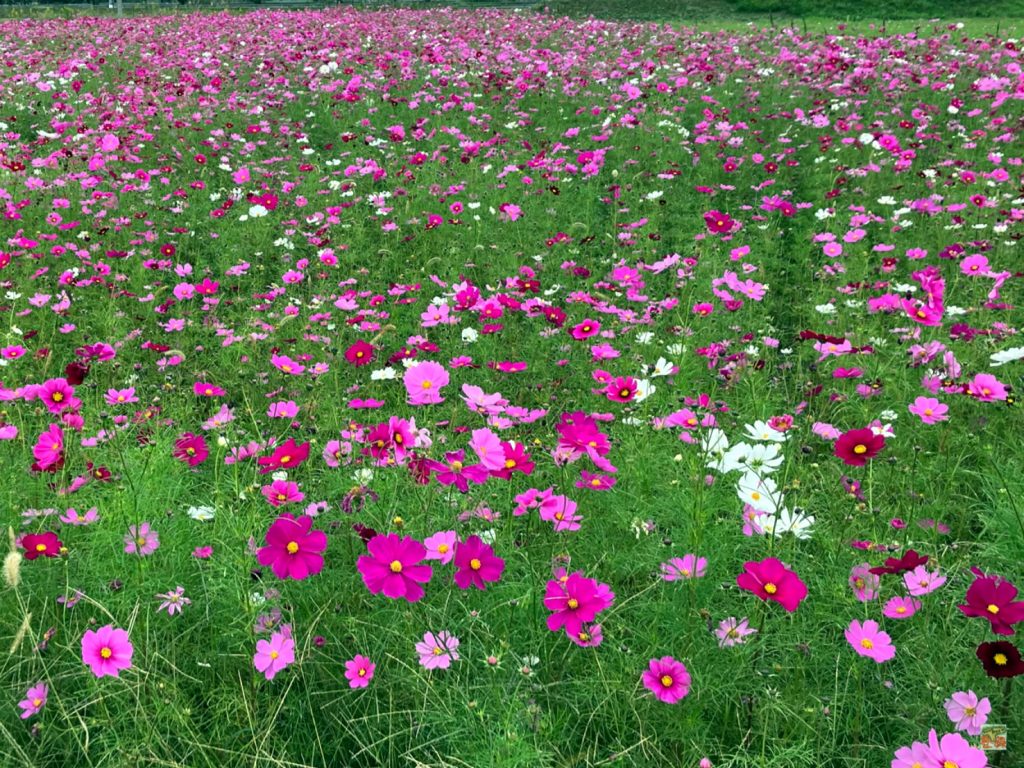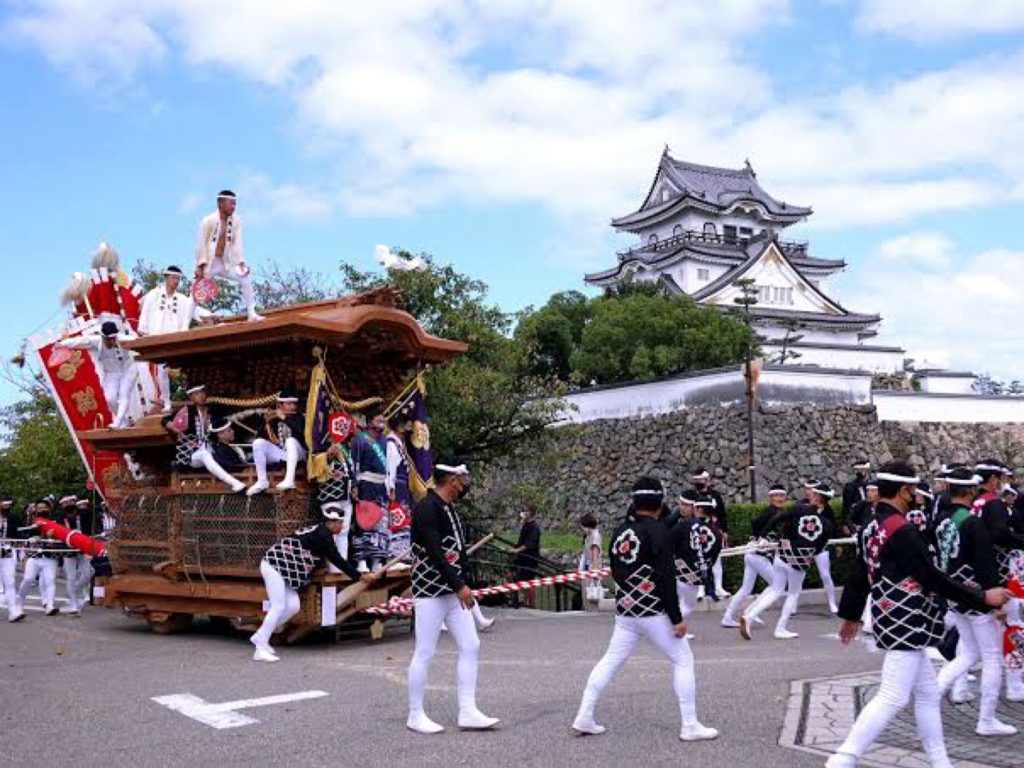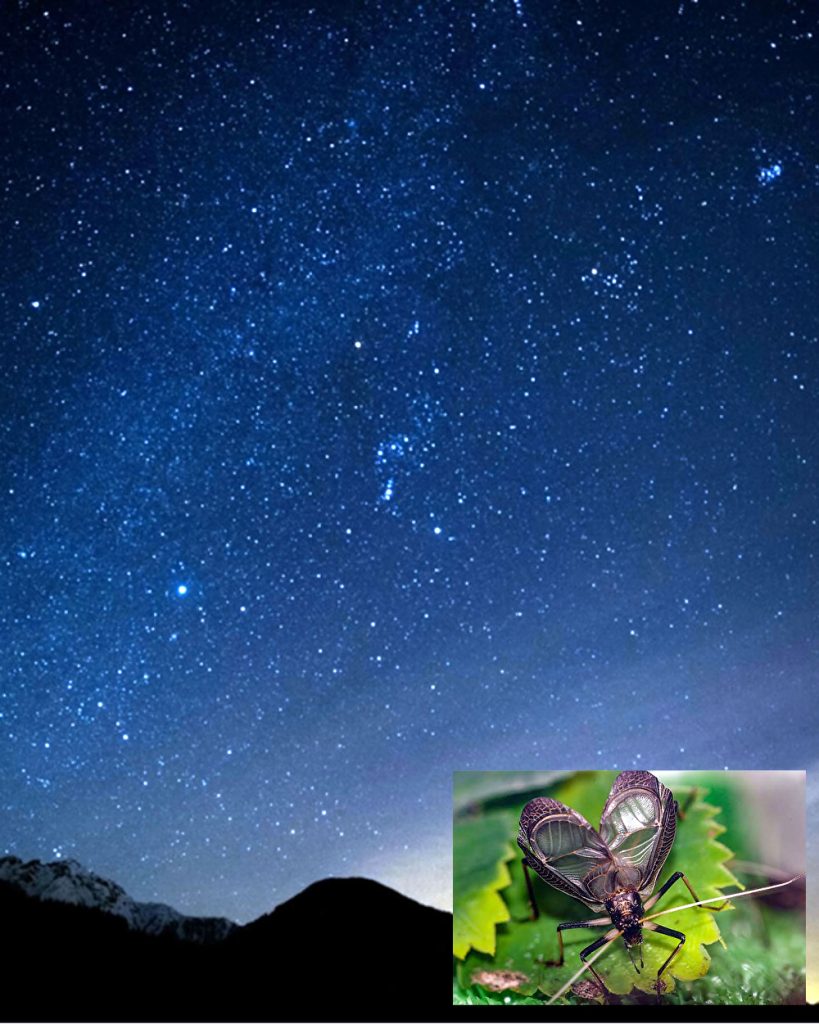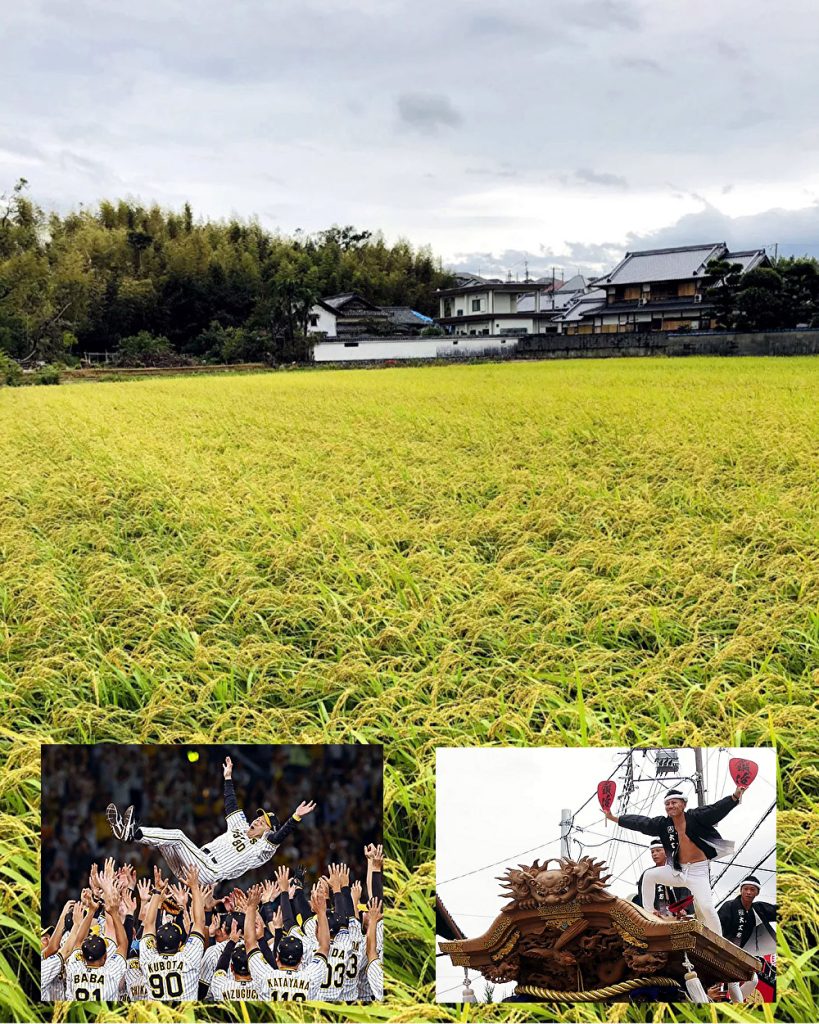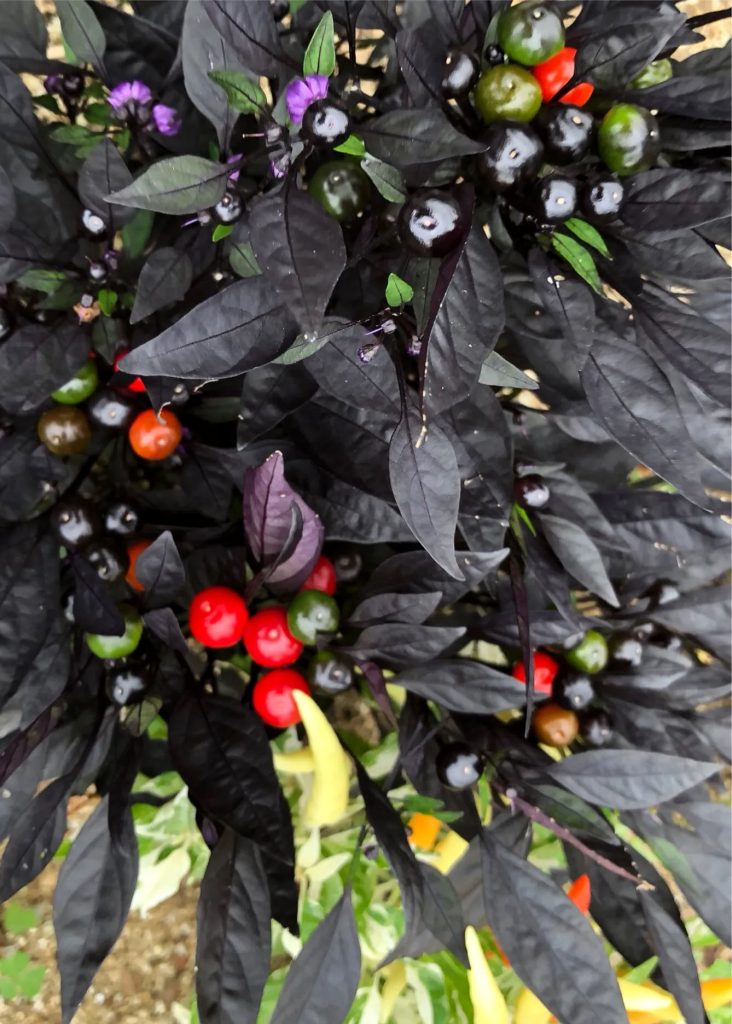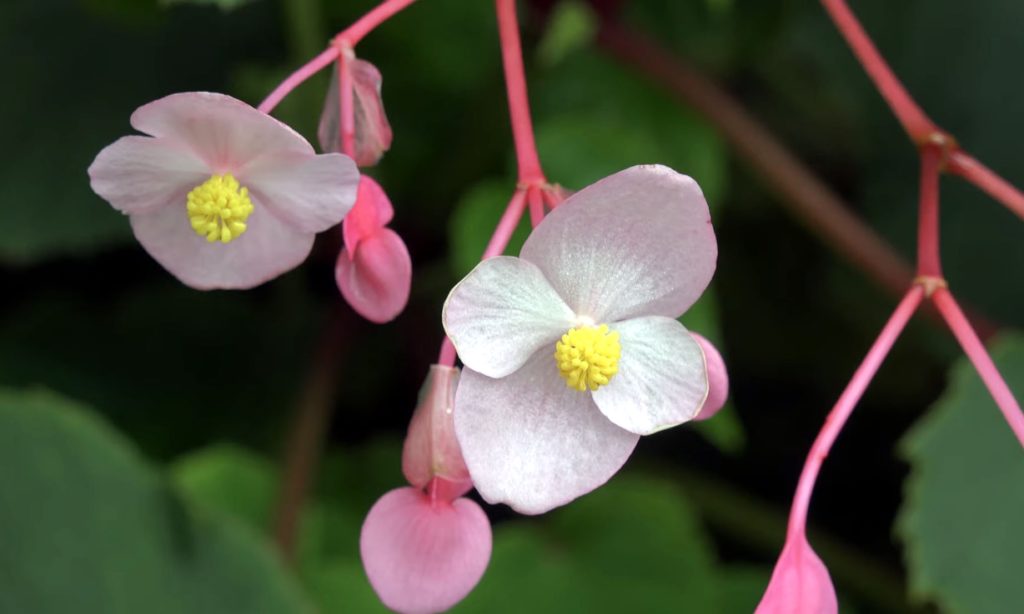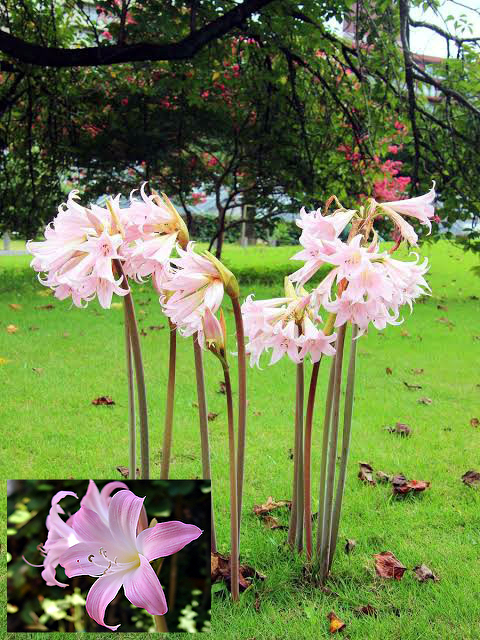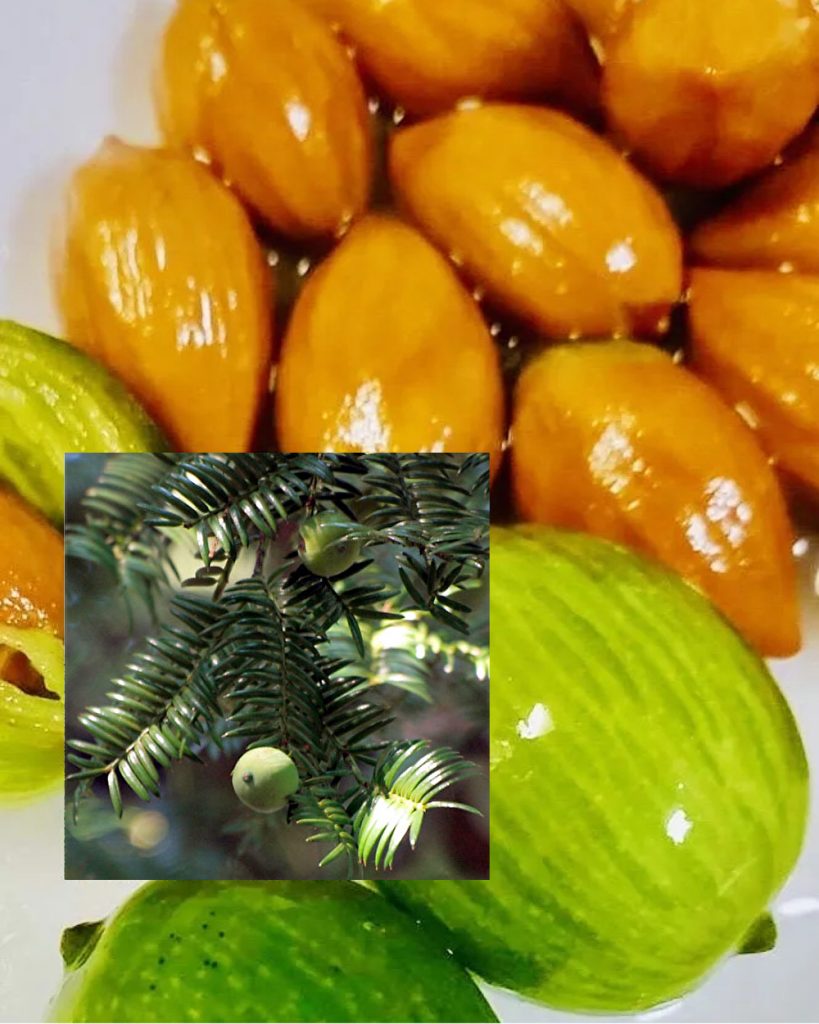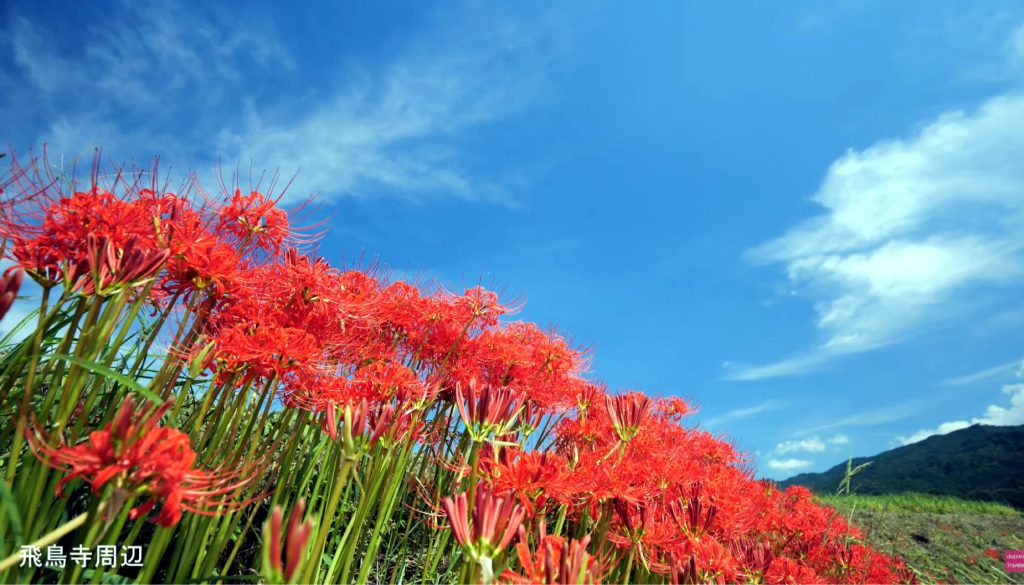
Despite the recent hot weather, Higanbana have bloomed in full bloom in time for the coming of the equinox. It is a very punctual flower. Higanbana bloom in fields and gardens all over Japan, not as much as cherry blossoms, but they are still a common sight during this time of year. A few Higanbana in a wide field or garden may go unnoticed, but when they bloom in large clusters, they transform the surrounding landscape. The peaceful countryside scenery is transformed into a colorful autumn scene. It is a scene that makes you feel the leaving summer and the coming autumn. Each person carries their own thoughts and feelings when they see it. In the far distance, there are cumulus clouds lingering, a remnant of summer, but above, thin brushstroke clouds float in the blue sky. A red dragonfly crossed over Higanbana where a swallowtail butterfly was perched.
こんなに真夏日が続くので彼岸花の開花も遅れるのかなと思いきや、彼岸の入りにはすっかり咲き揃いました。誠に律儀な花です。広々とした野山に咲く彼岸花、街中の植え込みに咲く彼岸花、桜ほどではありませんが、この時期、日本の至る所に彼岸花が咲いています。広い田や畑に一二本咲いても周りの景色に呑み込まれて、全く目立ちませんが、それが何十本も群れ咲くと、あたりの景色も一変します。静かな田園風景が華やかな秋景色に変わります。行く夏と秋の訪れを実感させる景色です。見る人それぞれに、それぞれの思いをはこびます。空のずっと向こうには夏の名残の入道雲が低く並んでいますが、頭上の青空には刷毛雲が薄く漂っています。アゲハ蝶の止まる彼岸花の上を赤とんぼがスーッと横切っていきました。

